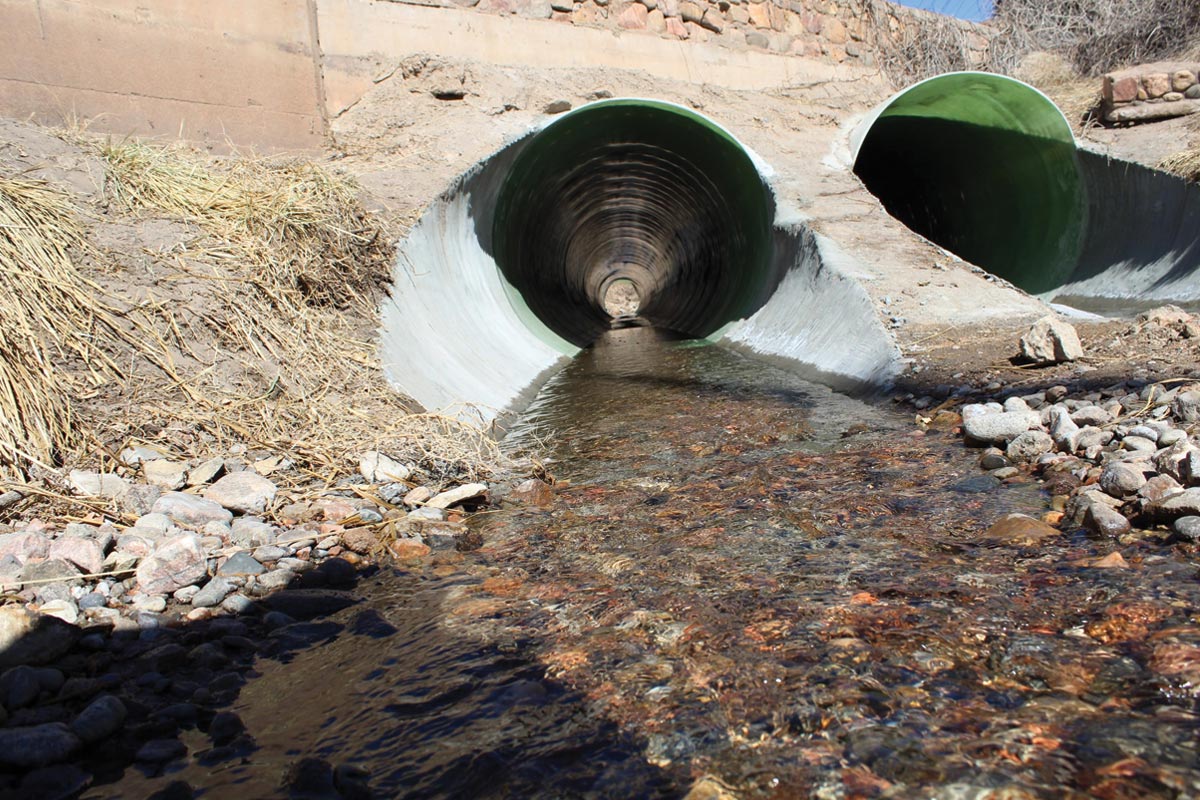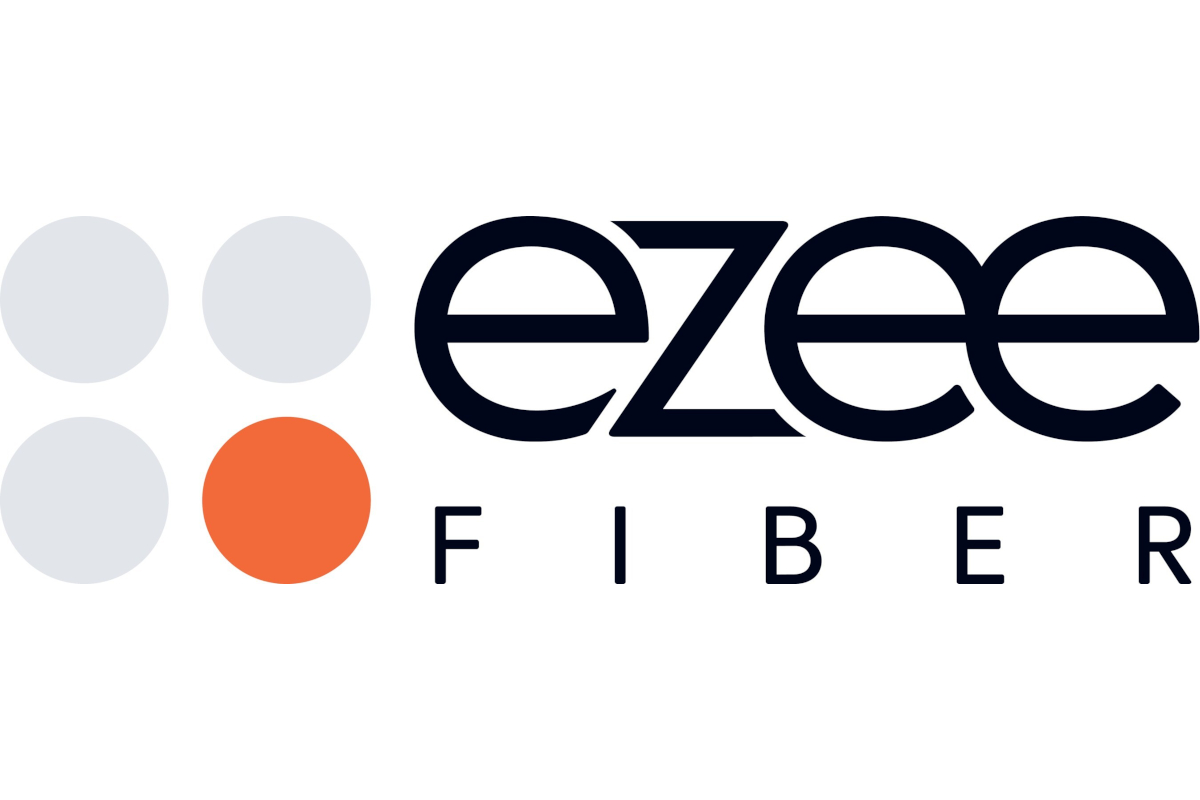Clogged in Cleveland
 During a typically dismal winter in Cleveland, a deep sewer was in need of a hardy cleaning. However, because of the pipe’s size and the extent it was clogged, your usual hydraulic jetting system wouldn’t work.
During a typically dismal winter in Cleveland, a deep sewer was in need of a hardy cleaning. However, because of the pipe’s size and the extent it was clogged, your usual hydraulic jetting system wouldn’t work.
The 12-ft diameter brick sewer line, buried 65 ft deep along Lakeside Avenue on the north end of the city’s downtown, had not been cleaned since it was installed more than 100 years ago. The sewer was packed full of material an average of 4 ft deep. The muck was so thick that hydraulic jetters were rendered virtually useless, according to J.T. Diamond, who was project manager for Inland Waters Pollution Control at the time of the project, which spanned from January 2004 to June 2005.
Instead of using Inland Waters’ large fleet of jetter trucks, the company entered a joint venture with Nezat Training and Consulting, which provided a technology called the Jigawon Large Bore Sewer and Syphon Cleaning System, says Rusty Nezat, director of Nezat Training and Consulting and operations manager for Jigawon.
The Jigawon sewer cleaning system uses the existing flow of a sewer to remove blockages and doesn’t require bypass pumping. The system restricts the existing flow inside the line and creates turbulence within the pipe, suspending the material causing the blockage and moving it downstream. The system uses low-pressure water at high volumes in order to achieve material suspension during the process. Whereas high-pressure pumping systems use 2,000 psi at 300 gpm, The Jigawon uses 15 psi at 2,000 gpm.
The debris is removed from a selected downstream manhole and the fluid and solid waste is moved into watertight containers. The fluid waste is then drained from the container and deposited back into the downstream sewer line, while the solid waste is captured and dumped at a site suitable for sewer grit and debris.
There are two types of Jigawon — Jigawon I and Jigawon II — which operate in the same fashion, but Jigawon I is for pipe diameters from 8 to 60 in. The Jigawon II is for diameters of 60 in. and larger.
This particular sewer cleaning project emerged as part of a larger project by Marra/Majestic to tie in additional lines into the interceptor, but the workers were having great difficulty walking through the deep debris, Nezat says. They were sinking and becoming stuck, which created an unsafe condition. The Northeast Ohio Regional Sewer District then realized how much pipeline capacity was being lost and added the cleaning project to the docket.
Prior to Jigawon being contacted on the Cleveland project, Nezat says, four other contractors attempted to clean this pipe using large jetting systems.
“They all failed due to the high-pressure jetting system’s inability to move the large amounts of standing water in the pipe,” he says. “In order to suspend material you must have flow and turbulence. The jetter could produce turbulence in the pipe but did not have the necessary power to cause the water within the pipe to move with the turbulence. The result was piles of debris accumulating throughout the pipe.”
With the Jigawon, workers cleaned 10,000 lf of the old sewer, removing 7,000 cu yds of material that included some construction-related items, such as bricks, which Diamond suspects had fallen into the pipe some time in the 1960s and had created a dam.
Project crewmembers removed 1,200 truckloads of material from the sewer, filling a dump truck almost every 45 minutes, Diamond says.
The project was not without its challenges, the greatest of which were the depth of the sewer line, the low volume of flow and the severity of the winter — this was Cleveland after all. Nezat says the temperature stayed below 32 F for 30 days straight.
The 65-ft depth of the pipe made it difficult to remove sewer debris and it limited communication between topside crewmembers with those down below. The Jigawon uses a patented extraction process, which overcame the depth and removed about 25 yds of material in 45 minutes, Nezat says. The low flow was overcome by inducing additional flow into the sewer from the Cuyahoga River to build a big enough head of pressure behind the Jigawon to push the material downstream.
Before the cleaning project, workers could scrape their hard hats against the top of the pipe just by walking through it because the blockage was so massive, Diamond says. Afterward, they were floating down the sewer in kayaks.
When All Else Failed
The Jigawon was initially developed for a sewer cleaning project in Fulton County, Ga., near Atlanta. Nezat Training and Consulting was contacted by the engineering firm MWH in regards to cleaning a 36-in. diameter line.
“They had been told by local contractors that due to the limited access, it was impossible to clean the line using all known conventional sewer cleaning equipment,” Nezat says. “We were asked to evaluate the project and determine how it could be cleaned.”
The company determined that no existing sewer cleaning process could be used to clean the pipe, so a new system was created by combining old technology such as scooters, kites and balls into the patented Jigawon process. The system was first patented in 2003.
The cost of employing a Jigawon System is determined after a thorough job inspection of the potential project has been completed, Nezat says. Factors that determine the charges are access, distances between access points, pipe diameter, flows and the amount of debris to be removed. For the Cleveland project, the Jigawon charge was $1.7 million, not including disposal of material or traffic control.
Project type: Sewer cleaning
Location: Cleveland
Date: January 2004-June 2005
Project specs: 10,000-ft long, 12-ft diameter brick sewer, 65 ft deep and 100 years old
Method: Jigawon II Large Bore Sewer and Syphon Cleaning System restricts the existing flow inside the line and creates turbulence within the pipe, causing the material to be put into suspension and moved downstream. The debris is removed from a selected downstream manhole by means of Nezat’s patented extraction system.
Owner: Northeast Ohio Regional Sewer District
Contractors/subcontractors: Marra/Majestic, Inland Waters Pollution Control, Nezat Training and Consulting/Jigawon
Bradley Kramer is a contributing editor to Trenchless Technology.
![]()




